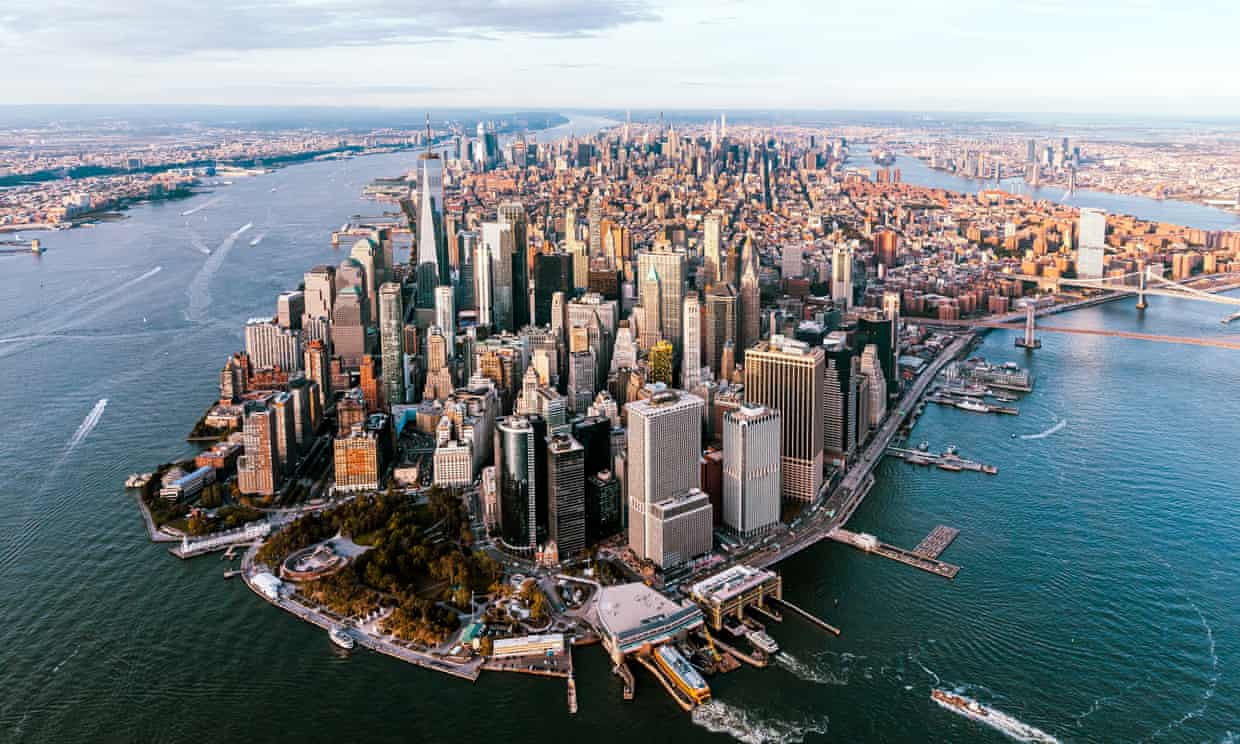S I N K I N G S L O W L Y
"New York is emblematic of growing coastal cities all over the world that are observed to be subsiding. Meaning there is a shared global challenge of mitigation against a growing inundation hazard.""New York City is ranked third in the world in terms of future exposed assets to coastal flooding, and 90% of the 67,400 structures in the expanded post-Hurricane-Sandy flood risk areas have not been built to floodplain standards.""As coastal cities grow globally, the combination of construction densification and sea level rise imply increasing inundation hazard. The point of the paper is to raise awareness that every additional high-rise building constructed at coastal, river, or lakefront settings could contribute to future flood risk, and that mitigation strategies may need to be included.""Major cities on every continent except Antarctica are observed to be subsiding.""Cumulative pressure applied to the ground from large buildings contributes to subsidence not only from initial primary settlement caused by soil compression and reduction of void space, but also through potential secondary settlement caused by creep in clay rich layers that can continue indefinitely.""Major cities around the world are expected to grow disproportionately relative to rural areas, with a projected 70 per cent of the world’s population living in cities by 2050.""As these trends [growing flood hazards] continue it will be important to be mindful of accompanying mitigation strategies against inundation in growing coastal cities."Study, United States Geological Survey
 |
| The view north from the 86th floor observation deck of the Empire State Building on March 18, 2023, in New York City. (Photo by Gary Hershorn/Getty Images) |
New York City, home to 8.4 million people, has been warned on previous occasions by experts that the city should put a stop to building skyscrapers, to avoid sinking. due to rising ocean levels and climate change. Geologist Tom Parsons led the latest study of the United States Geological Survey which suggests that ongoing development is responsible for exacerbating dangers faced by a city where the sea level is predicted to rise by five feet to the end of the century.
"The point of the [study] paper is to raise awareness that every additional highrise building constructed at coastal, river, or lakefront settings could contribute to future flood risk, and that mitigation strategies may need to be included."New York City is said to contain a million buildings whose combined weight is estimated at 771 million tonnes. The latest study points out that the city is at the present time sinking by one to two millimetres annually. Lower Manhattan and parts of the boroughs of Brooklyn and Queens face the greatest threat.
"New York City faces accelerating inundation risk from sea level rise, subsidence, and increasing storm intensity.""A deeply concentrated population of 8.4 million people faces varying degrees of hazard from inundation in New York City.""Two recent hurricanes caused casualties and heavy damage in New York City.""In 2012, Hurricane Sandy forced seawater into the city, whereas heavy rainfall from Hurricane Ida in 2021 overwhelmed drainage systems because of heavy runoff within the mostly paved city.""Additionally, urbanization itself may exacerbate the problem."
The threat is real, this latest study repeats in large part, what has been examined before and relayed to city authorities who have previously been urged to address the critical issue. Nonetheless despite the threat, the authors emphasize that the response has been inadequate, in spite of the fact that New York City's ranking is the third most threatened city in the world at risk of coastal flooding.
Fully 90 percent of the buildings constructed in areas at risk of flooding following the catastrophe of Hurricane Sandy, were not built to the required standard. "New York is emblematic of growing coastal cities all over the world that are observed to be subsiding, meaning there is a shared global challenge of mitigation against a growing inundation hazard."
In 2014, scientists gave warning that over fifty cities could be at risk, highlighting fears over flooding on the U.S. Eastern Seaboard. Planners in Boston recommend that canals be built in the city's Back Bay area to protect the city. Miami Beach has initiated an upgrading of its stormwater system to prevent the sea from backing up into its pipes, and Norfolk has returned some of its coastal parks to naturally absorbtive wetlands.
 |
| The water around New York City has risen by about 9in since 1950. Photograph: Alexander Spatari/Getty Images |
"It’s not something to panic about immediately but there’s this ongoing process that increases the risk of inundation from flooding.""The softer the soil, the more compression there is from the buildings. It wasn’t a mistake to build such large buildings in New York but we’ve just got to keep in mind every time you build something there you push down the ground a little bit more.""[New York and other coastal cities] have to get planning for this. If you get repeated exposure to seawater, you can corrode steel and destabilize buildings, which you clearly don’t want.""Flooding also kills people, too, which is probably the greatest concern."Tom Parsons, Geophysicist, United States Geological Survey
Labels: Flooding Threats, Geological Study, New York City, U.S. Geological Survey, Unresponsive City Authority
0 Comments:
Post a Comment
<< Home